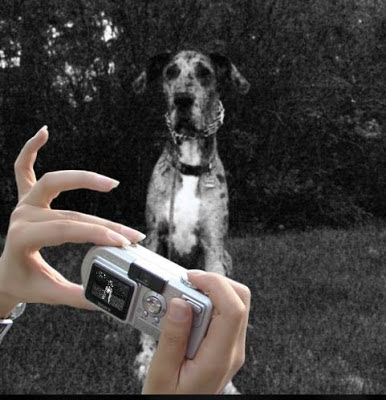How to Fit a Prong Collar
by Ed Frawley
 |
| Goliath |
The biggest problem with prong collars is that new dog owners don't know how to put them on, how to size them or how to have their dog wear them. This article will address these issues.
Normal choke collars need to be ordered by length (i.e. 22 inches long etc.) Prong collars are ordered by size (small, medium, large or extra large). They all come in a standard length which is adjusted to fit the neck of the dog by removing or adding links to the collar.
Prong collars are meant to be put on and taken off before and after daily training sessions. Unlike a choke collar that is often left on the dog all the time (in some cases this can be a dangerous practice).
A common problem new trainers have is they don't remove enough links to get the correct snug fit. When that happens the collar hangs down on the dogs neck which results in the collar not working the way that it was designed. A prong collar should fit the way you see it in the photo below.

A Properly Fit Prong Collar on a Doberman
The correct position for a prong collar is to sit right behind the ears and up under the jaw line like you see in the photo above. The photo below shows how many people mistakenly let a dog wear a prong.

This photo above demonstrates a prong collar that was not properly sized
for the dog. The collar is too loose and riding too far down on the dog's neck.
It should be up where I have drawn the yellow line.

This collar is correctly sized and fits properly. The
rings on the leash are attached to the right place on
the side of the neck.
Sizing the Prong
Adding and Removing Links
Some people mistakenly try and put a prong collar on their dog by slipping it over the dogs head and then moving it down on the neck. That's wrong. Prong collars are designed to be put on and taken off by unhooking links and actually unsnapping the collar from around the neck.
The right way to unhook a collar is to pinch one of the links and pull it apart. Taking the collar off is always easier than putting it back on.

This photo shows how to pinch a link and take the collar
off the dog's neck.

This photo shows how to start reconnecting a link to put the collar back on the
dog's neck. Put one side of the prong of a link in one side of the connecting link.
Then squeeze the link with the thumb until the other side drops in place.

When both prongs are lined up (by using thumb pressure
on the link) the collar will go back together.

Problems develop if new trainers try to fit both sides of the link
together without using thumb pressure to squeeze the link together.
Unless the prong is pinched together it will never reconnect.
Proper Placement Once the Collar is on the Dog

Most of the time when a collar is put on a dog the handler connects the collar with the links behind the dog's ears - this is the easiest place to access the links (by the red arrow in the photo above). Once the collar is on the neck the rings to connect the leash to are under the dog's chin - which is the wrong place for them to be. You will have to rotate the collar so the rings are in the proper spot on the dog's neck. This is usually on the right side of the neck like you see in the photo below.

This photo shows a proper fitting prong collar - it is
sized properly, it is sitting in the correct spot on the
dogs neck and the rings are located in the correct spot
for the leash to be attached (right side of the neck).
Dead Ring vs. Live Ring
There are two ways to attach a leash to the prong collar. It can either be connected to the live-ring or the dead-ring. Which one you choose will depend on the dog and what you are trying to do.
Leash that is attached to the live-ring on the prong collar.
When the snap is on the live-ring the correction is amplified because more slack is taken out of the collar when the correction is given and the leash is popped. The live-ring is used if a dog does not respond well to the snap being placed on the dead-ring.

This photo shows how to attach a snap to the dead-rings
on the prong collar. Hook your leash to both sets of rings.
The first time a prong is used on a dog the snap should be on the dead-ring. When a correction is applied and the leash is attached to the dead-ring the correction will not take as much slack out of the collar as when it is attached to the live-ring.
Copyright 2010 Leerburg® Enterprises, Inc. All rights reserved. All
photos and content on leerburg.com are part of a registered copyright
owned by Leerburg Enterprise, Inc.
Copyright 2010 Leerburg® Enterprises, Inc. All rights reserved. All photos and content on leerburg.com are part of a registered copyright owned by Leerburg Enterprise, Inc.
No comments:
Post a Comment